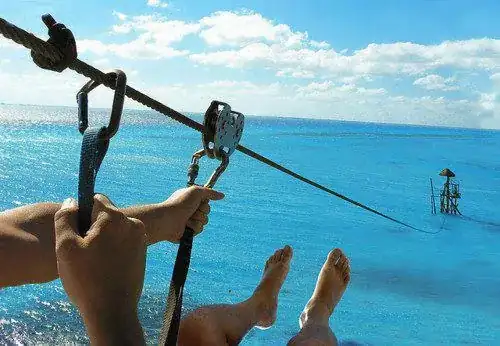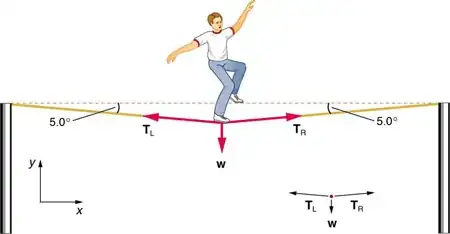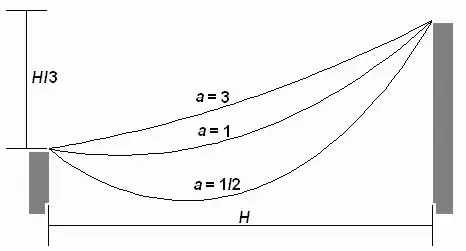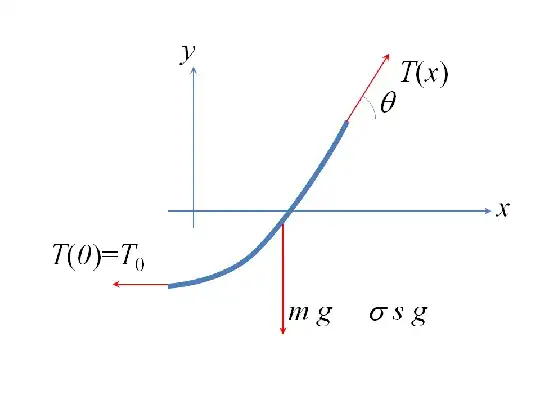I posted this picture of someone on a zipline on Facebook.

One of my friends saw it and asked this question, so he could try to calculate the speed at which someone on the zipline would be going when they hit the water.
The only answer, which was accepted, includes the disclaimer, "Assuming the pulley being used to slide to be friction less.Though not possible.Also the rope is assumed to be in-extensible and straight."
I used to have a zipline of about the same length in my back yard as a kid and even when I was young, I noticed that we could never straighten the line completely, even when it was slack, we could not make it completely straight. And, naturally, once weight was added, there was a curve where the weight pulled the line down.
One of the comments from the member providing the answer is "Well i can show you why the string cannot be ever straight." I know that from experience. We could never make it completely straight with no sagging. I asked the reason for this and was directed to a book on Amazon. Having just spend $50 on a number of books for summer reading, my book budget is gone for a while.
So can someone answer that? Why will the line never be straight when it's set up (and when there is no load on it)?


